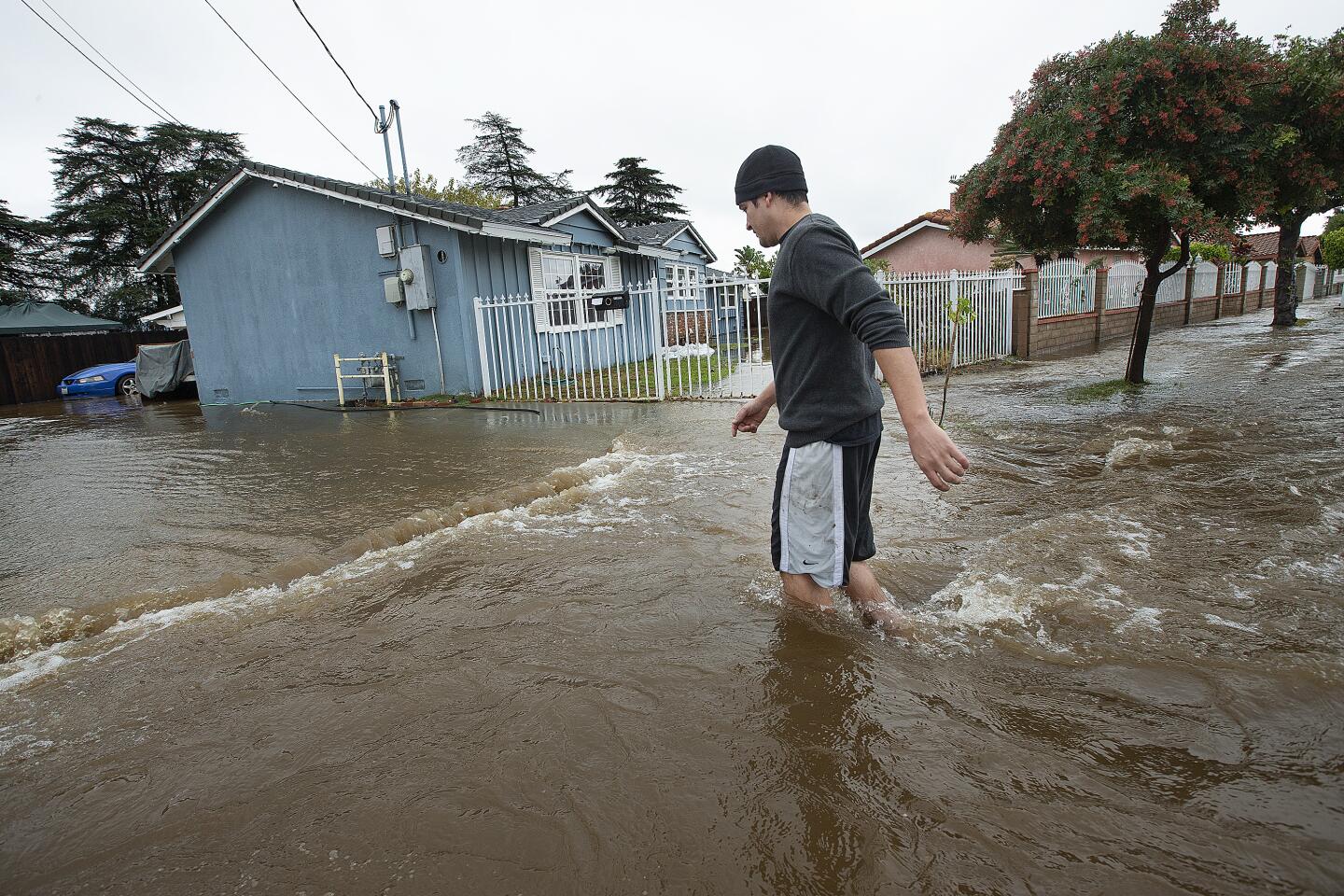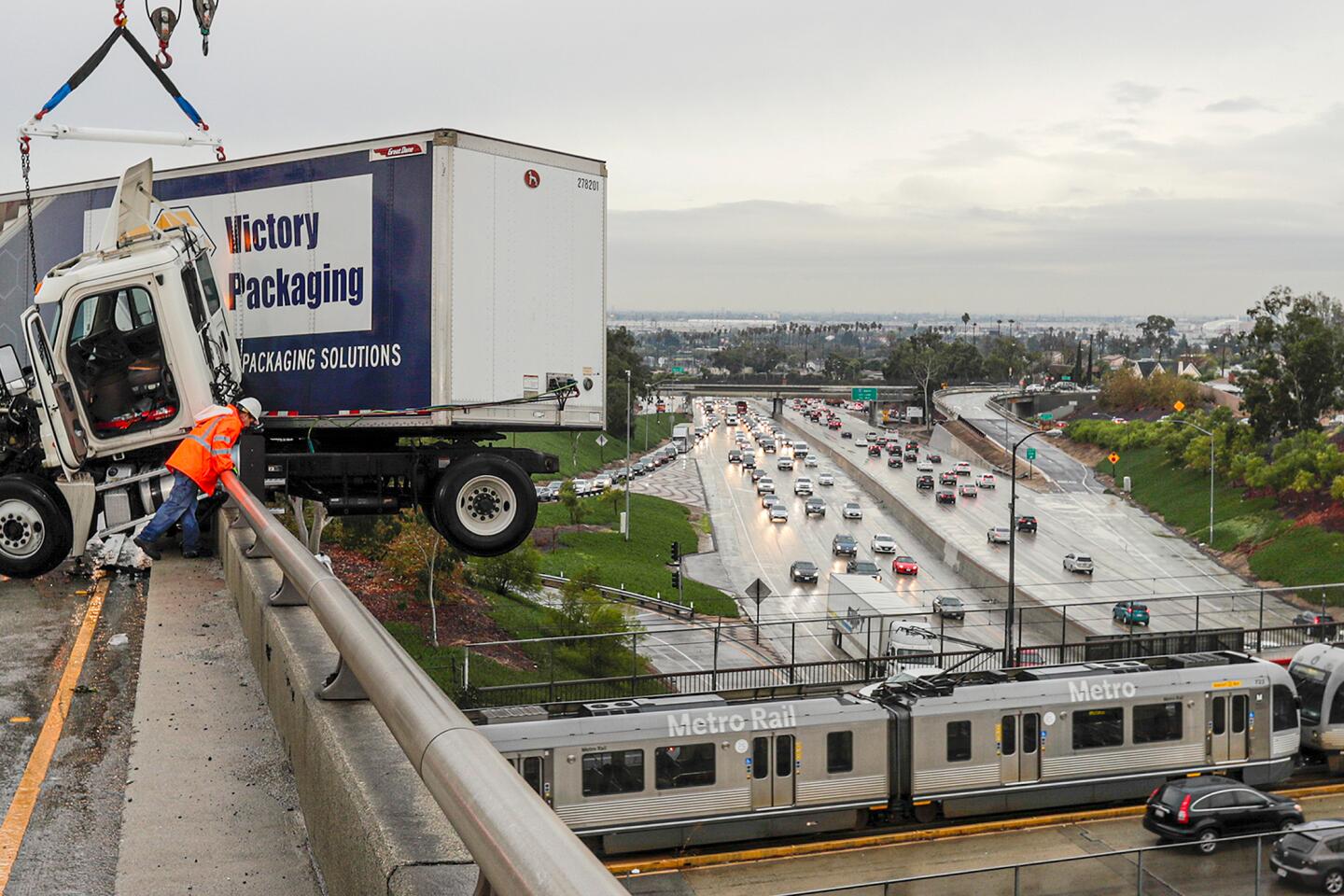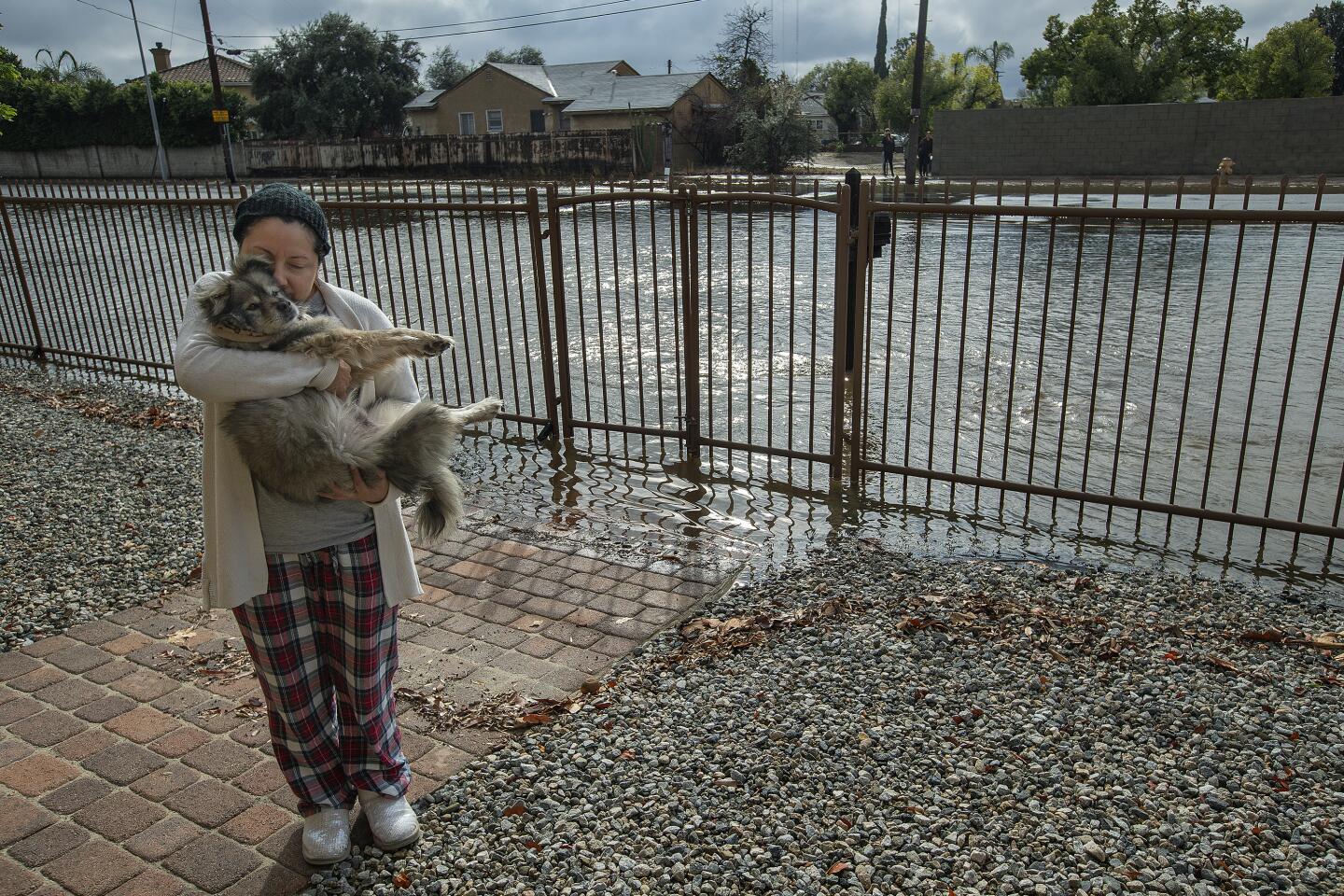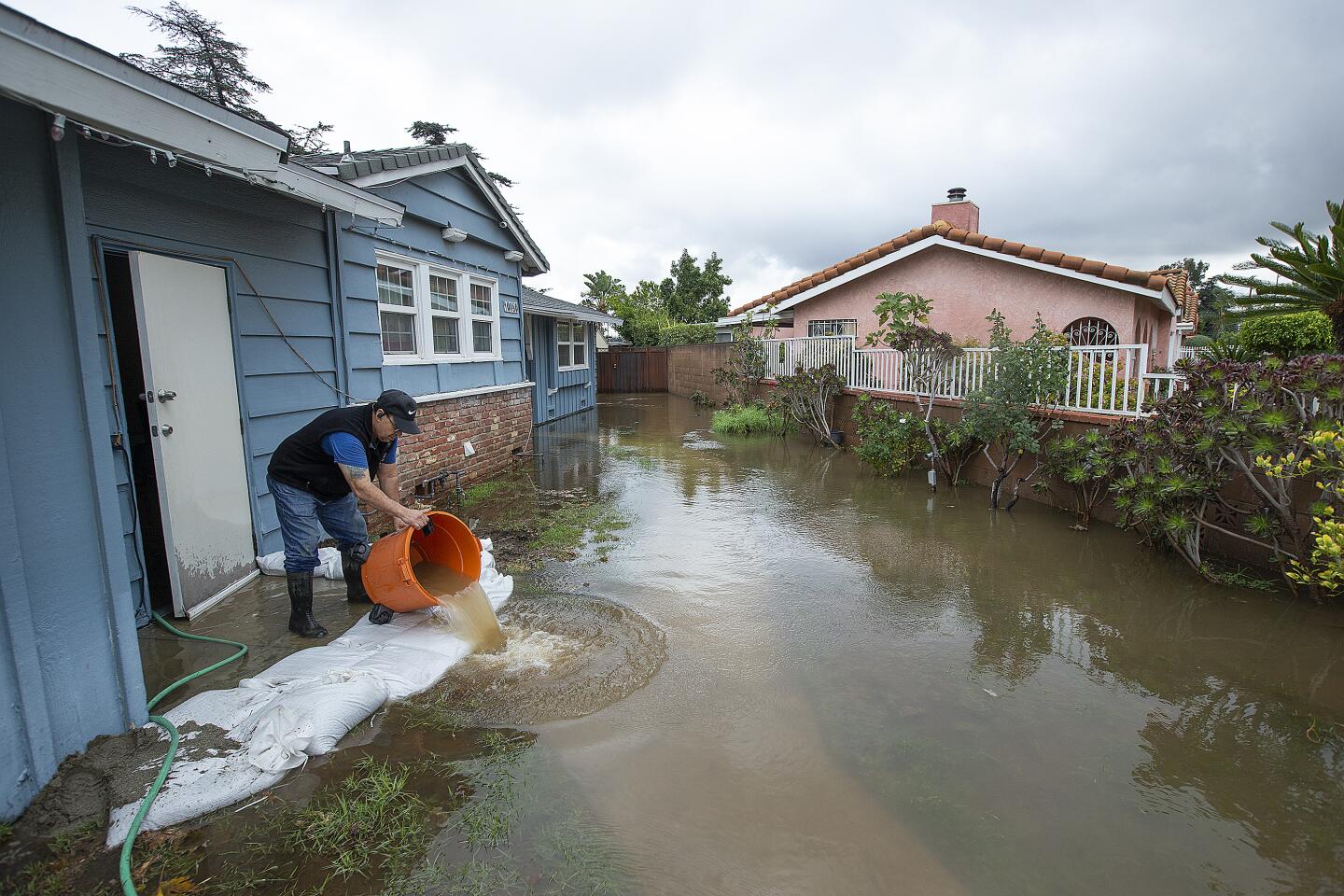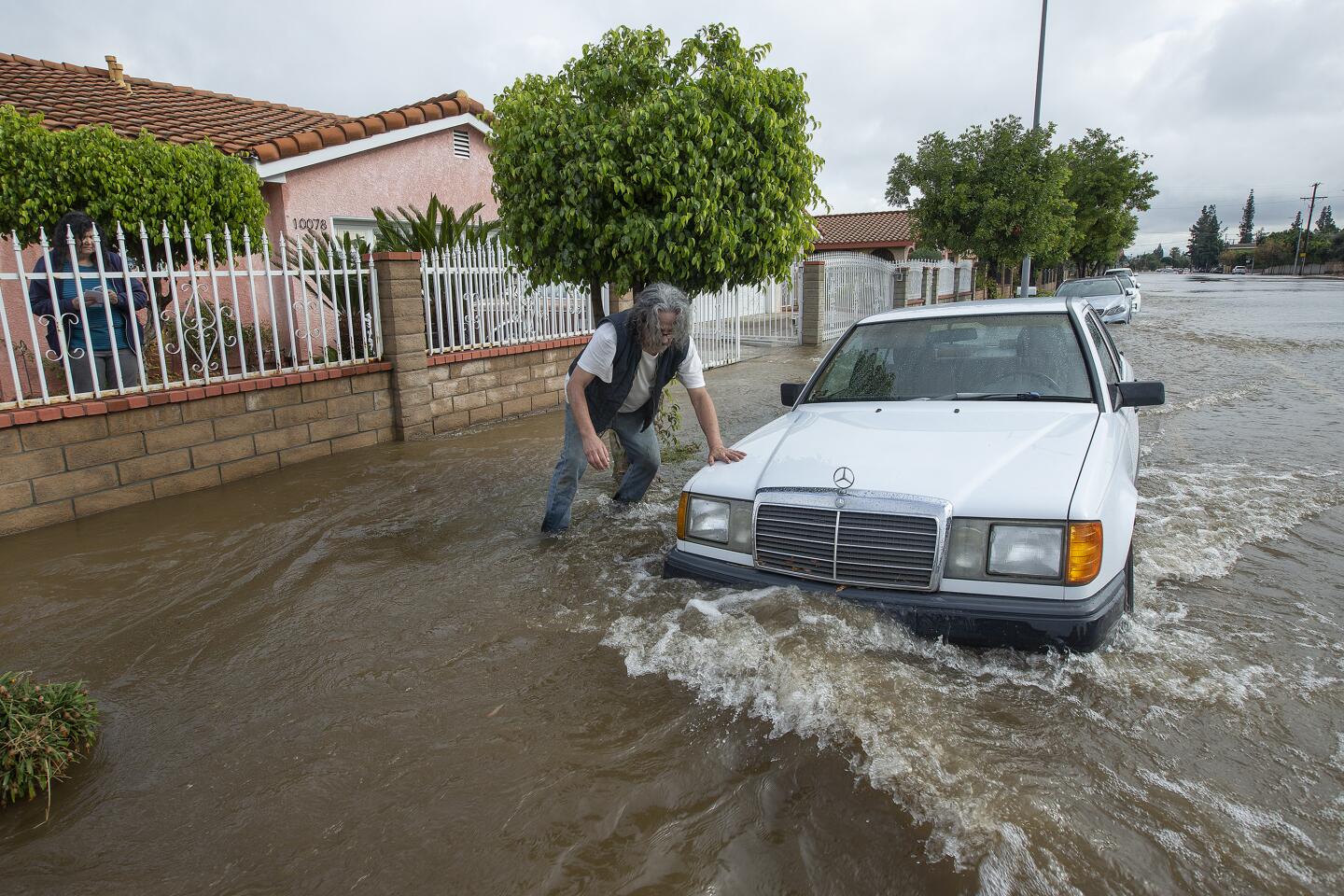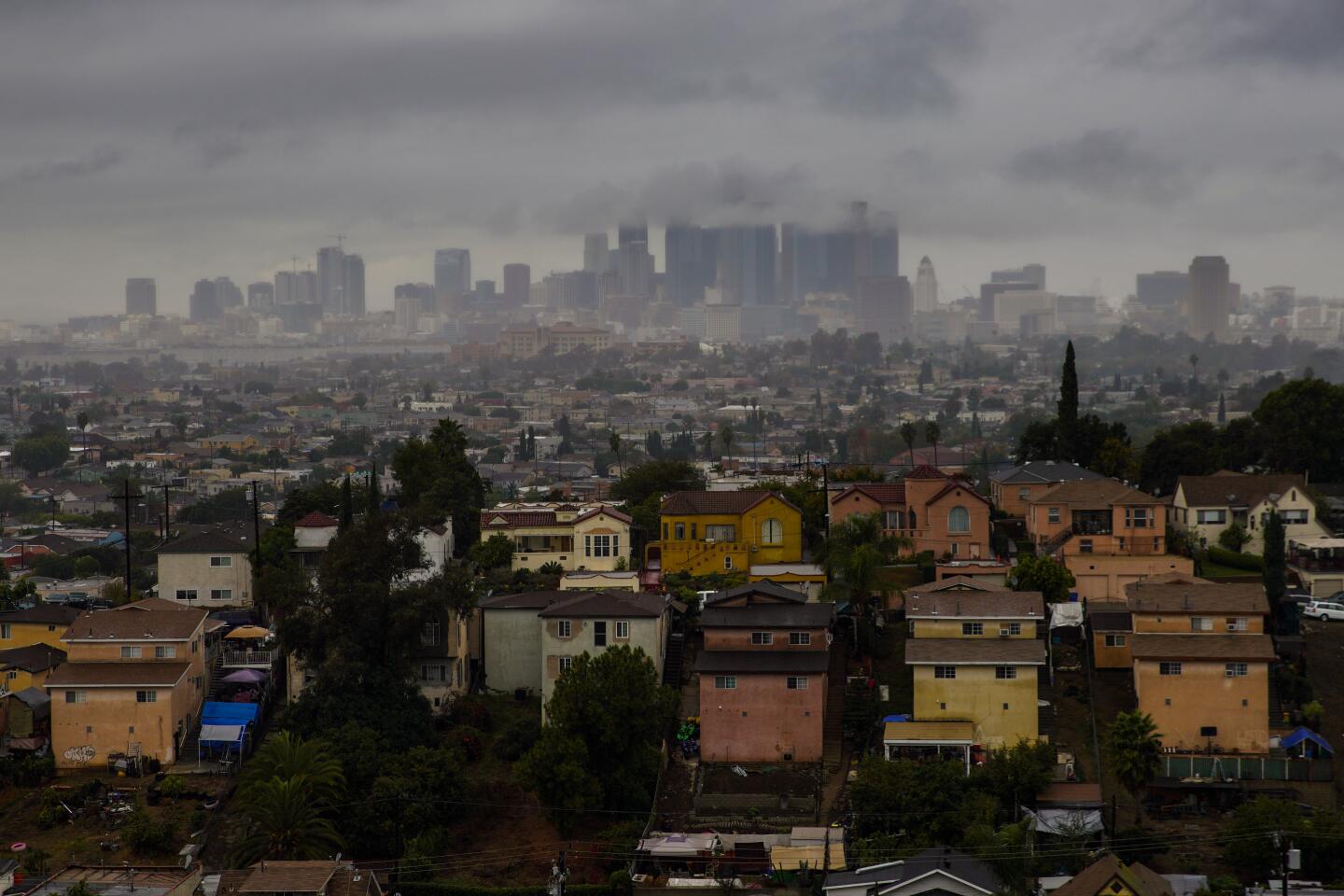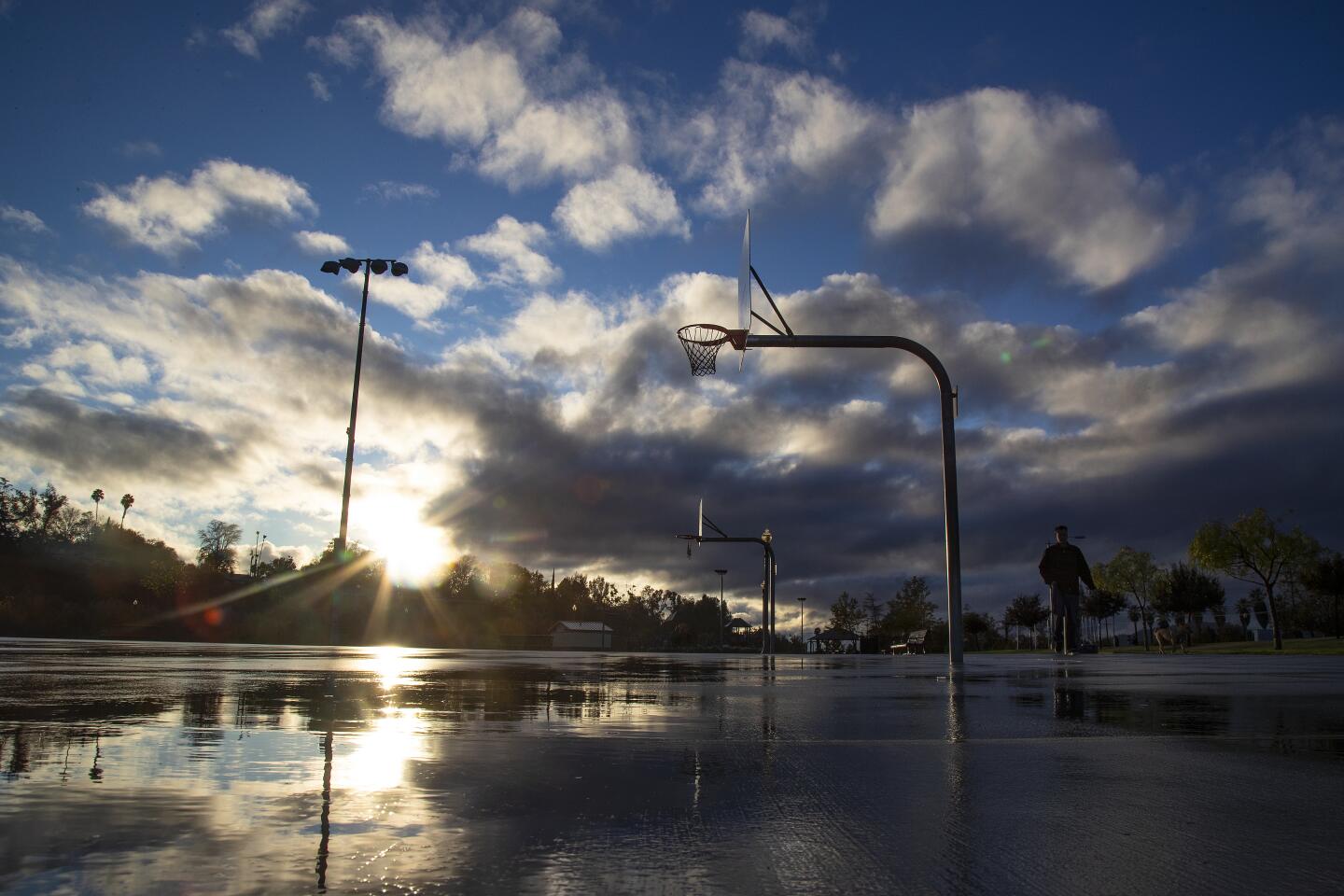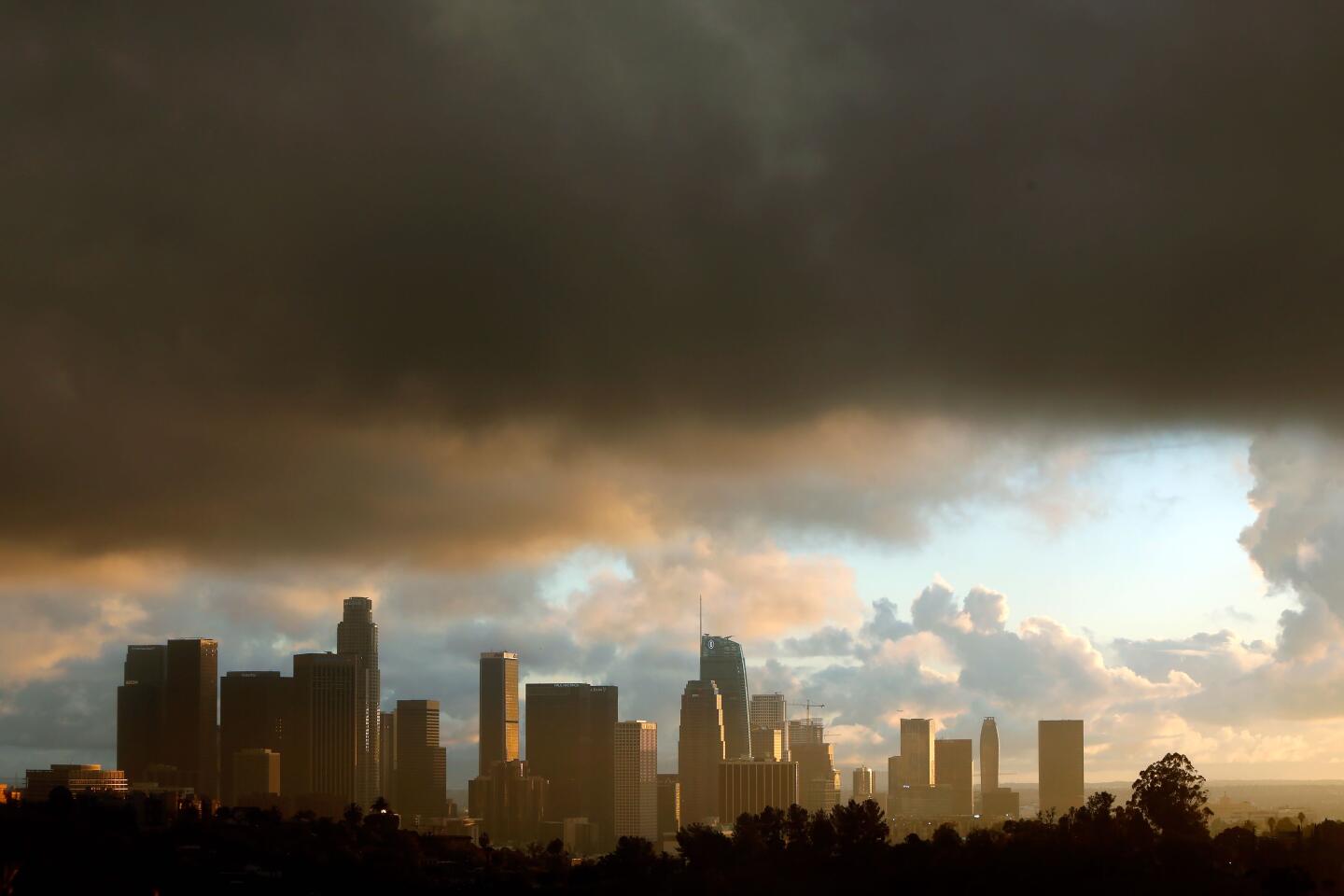Atmospheric rivers cause $1 billion in damage a year, study shows, and are getting worse
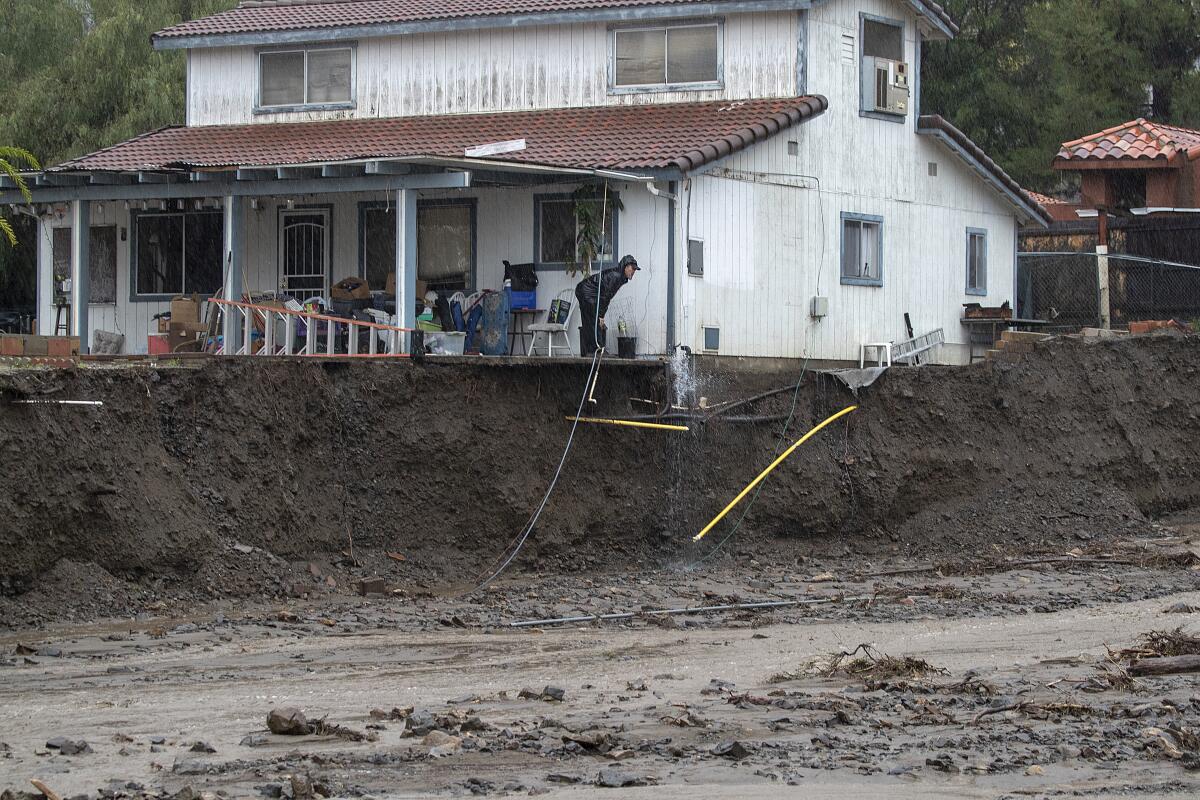
As back-to-back atmospheric rivers have made umbrellas a necessity across the state â and with more rain on the way in California this weekend â a new study reveals the connection between the weather phenomenon and the economic effects of localized flooding.
Atmospheric rivers, the storms that carry moisture from the tropics to the mid-latitude regions, have long been linked to the ecological impacts they have on a region. But when the storm passes, whatâs left in its wake?
In a study published Wednesday in Science Advances, researchers found that from 1978 to 2017, atmospheric rivers accounted for $42.6 billion in flood damage in 11 Western states â 84% of the estimated total water-related damage of $50.8 billion. Thatâs roughly $1.1 billion in damage done by atmospheric rivers every year.
âResearch has shown that these storms are going to become more intense over the coming decades,â said Tom Corringham, one of the authors of the study by the Scripps Institution of Oceanography at UC San Diego and the U.S. Army Corps of Engineers.
Atmospheric rivers are a concentrated line of water vapor in the middle and lower atmospheric levels. The continuous stream of moisture pushes across the ocean until it encounters an obstacle, such as the coastal ranges of the West, which then causes the atmospheric river to unleash its load of moisture.
Some atmospheric rivers are weak and produce beneficial rain, helping vanquish devastating droughts.
In 2016, a series of larger atmospheric rivers helped ease Californiaâs epic drought by producing record rain and snow in the northern part of the state.
Just a few atmospheric river events can provide West Coast states such as California with a third to half of their annual precipitation, increasing snowpack levels and filling basins. A strong atmospheric river can carry 7½ to 15 times the average flow of liquid water at the mouth of the Mississippi River. In fact, Corringham says heâs working on a new study examining the benefits of the moisture-rich storms as they replenish water supplies.
But larger, more destructive atmospheric rivers can cause extreme rainfall, floods and mudslides.
On average, 30% to 50% of the West Coastâs annual precipitation comes from a few atmospheric rivers each year. And the new data conclude that 99% of all flood damage in the Western coastal states of California, Oregon and Washington was caused by atmospheric rivers.
Atmospheric rivers, a term that has superseded the oft-used âpineapple express,â have accounted for at least $19.2 billion in damage across California â more than any other state examined during the study period. Researchers found that Sonoma County was hit hardest by the weather phenomenon, racking up $5.2 billion in destruction.
Two major atmospheric events in Northern California played a significant role in the stateâs water costs: the seven-day flooding of the Russian River at Guerneville in 1995 and a 2017 event that damaged the emergency spillways of the Oroville Dam in Northern California, prompting evacuations for more than 180,000 residents. Both events caused over $1 billion in damage.
The study shows a small number of âextremeâ atmospheric rivers â just 13 in 40 years â was responsible for a significant amount of flood damage in the 11 states.
Last seasonâs unusually cold and wet winter brought epic snow and serious flooding in Northern California, as dozens of atmospheric rivers pounded the state early in 2019.
Infrastructure also factors into the cost of the damage, research shows. Areas near coastlines and rivers proved most vulnerable to significant flooding.
Heavy rains can cause extensive damage to roadways, often forcing closures as the asphalt gives way. Road repairs in the San Jacinto and San Bernardino mountains after several moisture-packed atmospheric rivers pounded the area in February were estimated to cost at least $14 million.
âThere isnât much evidence that people are moving to safer areas after their homes are damaged,â Corringham said. âGenerally people rebuild in a place which leaves them at risk in future flooding.â
The Congressional Budget Office reports that damage from hurricane winds and storm-related flooding costs $54 billion annually. But Corringham said, unlike the tallies associated with hurricanes and tornadoes, there is no systemic accounting of the damage caused by atmospheric rivers, although strides have been made in the past decade.
As the climate warms, extreme atmospheric rivers will become more intense, researchers found. Modest increases in a stormâs intensity can result in significant monetary damage. Without stabilizing the global climate system, itâs not just the land that will be at risk, Corringham said.
âItâs one of the many ways in which the economy will be affected by climate change.â
Times staff writer Paul Duginski contributed to this report.
More to Read
Sign up for Essential California
The most important California stories and recommendations in your inbox every morning.
You may occasionally receive promotional content from the Los Angeles Times.
